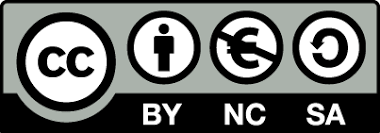บทคัดย่อ
บทนำ : โรคลมชักที่ไม่ตอบสนองต่อการรักษาในเด็กเป็นปัญหาสาธารณสุขที่สำคัญในประเทศไทย โดยสาเหตุส่วนใหญ่เกิดจากการผิดปกติทางพันธุกรรม ปัจจุบันมีการนำการตรวจรหัสพันธุกรรม Exome Sequencing (ES) มาช่วยในการวินิจฉัยผู้ป่วยเด็กโรคลมชักที่ไม่ตอบสนองต่อการรักษา การวินิจฉัยโรคได้อย่างแม่นยำช่วยให้แพทย์ดูแลรักษาผู้ป่วยได้อย่างเหมาะสมมากยิ่งขึ้น นอกจากนี้ ยังเป็นประโยชน์ในการให้คำปรึกษาทางเวชพันธุศาสตร์และการวางแผนครอบครัวในอนาคต อย่างไรก็ตาม ค่าบริการสำหรับการตรวจรหัสพันธุกรรม ES ยังคงมีราคาสูงเมื่อเปรียบเทียบกับการตรวจวินิจฉัยด้วยวิธีมาตรฐาน วัตถุประสงค์ : เพื่อประเมินความคุ้มค่าทางเศรษฐศาสตร์และผลกระทบด้านงบประมาณของการตรวจรหัสพันธุกรรม ES ในผู้ป่วยเด็กโรคลมชักที่ไม่ตอบสนองต่อการรักษาและรวบรวมข้อมูลเรื่อง ความพร้อมของการให้บริการตรวจด้วยเทคโนโลยีทางพันธุศาสตร์ในประเทศไทย วิธีการศึกษา : การศึกษานี้เป็นการวิเคราะห์ความคุ้มค่าทางเศรษฐศาสตร์ในมุมมองสังคม โดยใช้แบบจำลอง decision tree และ Markov เพื่อประเมินต้นทุนและผลลัพธ์ในรูปของปีสุขภาวะ (Quality-Adjusted Life-Year หรือ QALY) โดยรายงานเป็นต้นทุนประสิทธิผลส่วนเพิ่ม (incremental cost-effectiveness ratio หรือ ICER) ในหน่วยบาทต่อปีสุขภาวะที่เพิ่มขึ้น เปรียบเทียบสถานการณ์ระหว่างการตรวจรหัสพันธุกรรม ES ในผู้ป่วยเด็กโรคลมชักที่ไม่ตอบสนองต่อการรักษากับสถานการณ์ที่ใช้การวินิจฉัยด้วยวิธีมาตรฐาน รวมทั้งประเมินผลกระทบด้านงบประมาณของการตัดสินใจเชิงนโยบายเรื่องการตรวจรหัสพันธุกรรม ES ในผู้ป่วยเด็กโรคลมชักที่ไม่ตอบสนองต่อการรักษาในประเทศไทย โดยใช้มุมมองของผู้รับผิดชอบด้านงบประมาณ ระเบียบวิธีวิจัยในการศึกษาครั้งนี้ ดำเนินงานตามแนวทางการประเมินเทคโนโลยีด้านสุขภาพของประเทศไทย ตัวแปรที่ใช้ในแบบจำลองได้จากการทบทวนเวชระเบียนผู้ป่วยในโรงพยาบาลจุฬาลงกรณ์ สภากาชาดไทย การทบทวนวรรณกรรมทั้งในและต่างประเทศ และข้อมูลจากโครงการวิจัยย่อยของการศึกษานี้ นอกจากนี้ คณะผู้วิจัยรวบรวมข้อมูลด้วยการสำรวจสถานพยาบาลที่มีความพร้อมในการให้บริการตรวจด้วยเทคโนโลยีทางพันธุศาสตร์ในประเทศไทย ผลการศึกษา : การตรวจรหัสพันธุกรรม ES ในผู้ป่วยเด็กโรคลมชักที่ไม่ตอบสนองต่อการรักษามีความคุ้มค่าในประเทศไทย ตามเกณฑ์ความคุ้มค่าที่ 160,000 บาทต่อปีสุขภาวะ โดยมีอัตราส่วนต้นทุนประสิทธิผลส่วนเพิ่มเท่ากับ 36,252 บาทต่อปีสุขภาวะ นอกจากนี้ยังช่วยประหยัดภาระงบประมาณของระบบหลักประกันสุขภาพประมาณ 18-36 ล้านบาท ในระยะเวลา 5 ปีข้างหน้า ปัจจุบัน ประเทศไทยมีโรงพยาบาลภาครัฐที่มีความพร้อมต่อการให้บริการตรวจด้วยเทคโนโลยีทางพันธุศาสตร์จำนวน 7 แห่ง ได้แก่ โรงพยาบาลจุฬาลงกรณ์ สภากาชาดไทย โรงพยาบาลศิริราช โรงพยาบาลรามาธิบดี โรงพยาบาลธรรมศาสตร์เฉลิมพระเกียรติ สถาบันสุขภาพเด็กแห่งชาติมหาราชินี โรงพยาบาลมหาราชนครเชียงใหม่และโรงพยาบาลสงขลานครินทร์ ซึ่งโรงพยาบาลส่วนใหญ่กระจุกตัวอยู่ในภาคกลาง อภิปรายและสรุปผลการศึกษา : งานวิจัยนี้พบว่า การตรวจรหัสพันธุกรรม ES ในผู้ป่วยเด็กโรคลมชักที่ไม่ตอบสนองต่อการรักษาในประเทศไทยมีความคุ้มค่า มีความเป็นไปได้ทั้งในด้านงบประมาณและขีดความสามารถของผู้ให้บริการ ดังนั้นควรเพิ่มการตรวจรหัสพันธุกรรม ES เป็นชุดสิทธิประโยชน์ภายใต้ระบบหลักประกันสุขภาพแห่งชาติ โดยราคาเบิกจ่ายที่เหมาะสมสำหรับการตรวจรหัสพันธุกรรม ES คือ 50,000 บาท สำหรับการตรวจรหัสพันธุกรรม ES ทั้งผู้ป่วย บิดาและมารดาของผู้ป่วย
บทคัดย่อ
Introduction: Infantile onset intractable epilepsy is a serious health problem in children with uncontrollable seizure using combined medications. This condition is often found to be related to genetic diseases. Currently, exome sequencing (ES) offers the potential benefit for accurate diagnosis, proper clinical management to these patients and genetic counselling for future pregnancies. ES is always available in Thailand at relatively high cost. Objectives: This study aims to determine the value for money of introducing ES for all patients with infantile onset intractable epilepsy, and the fiscal burden to the Thai government if it is included in the benefit package of the Universal Coverage Scheme. We also review the feasibility of providing ES for all eligible patients throughout the country. Methods: Model-based economic evaluation, consisting of a decision tree and a Markov model, was conducted using a societal perspective to assess the value for money in providing ES for all patients compared to the current practice without ES. The primary outcome was incremental cost-effectiveness ratio (ICER) expressed in 2022 Thai Baht (THB) per quality adjusted life year (QALY). For budget impact analysis, budget holder perspective was used. The methodology follows the Thai HTA guidelines version 1 and 2. Model input parameters were collected from real-world data of a 104-patient cohort undertaking ES at the Chulalongkorn University Hospital, both national and international literature, and clinical expert elicitation exercise done for this study. Number and geographical location of health facilities offering ES in Thailand were also collected and analysed. Results: According to the Thai cost-effectiveness threshold of 160,000 THB per QALY gained, providing ES for all patients with infantile onset intractable epilepsy is cost-effective compared to the current practice. The ICER was estimated at 36,252 THB per QALY gained. With an assumption that there will be 285-569 new cases per year, the introduction of ES would save the government budget about 18-36 million THB in the next 5 years. This is because ES can lead to better diagnosis and reduce future patient management costs. Currently, there are six tertiary care hospitals throughout the country possibly offering ES for infantile onset intractable epilepsy. However, most of them are located in the central region. Conclusion: Offering ES for all infantile onset intractable epilepsy patients represents a good value for money. Provision of ES is also feasible in terms of government budget and provision capacity. Thus, ES should be included in the Thai health benefits package at the price of 50,000 THB for patient’s and parent’s tests.


